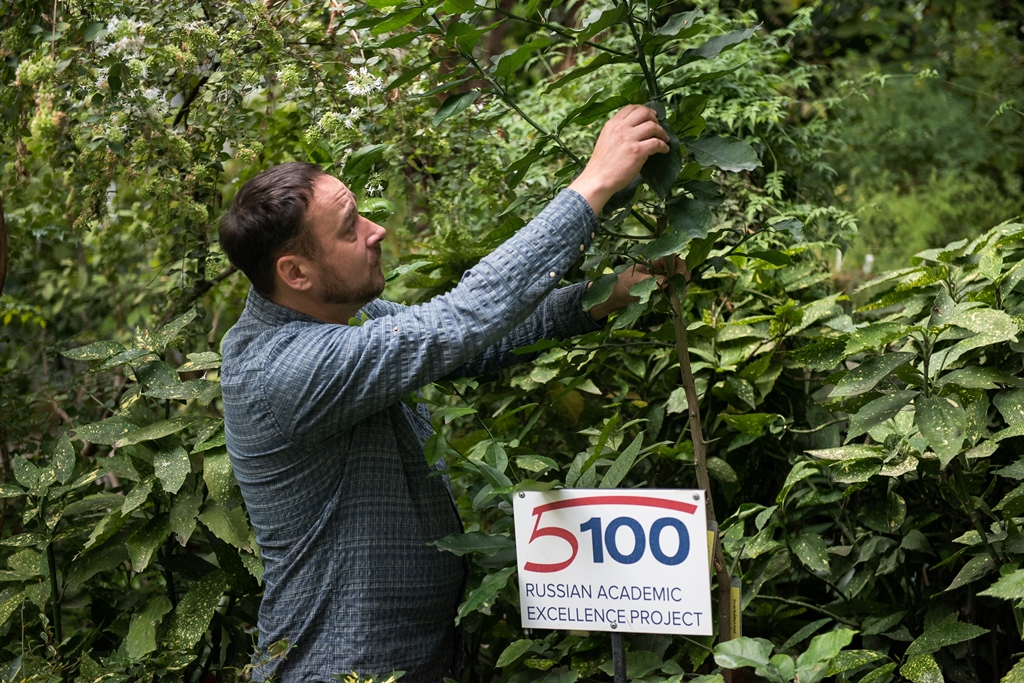Researchers at the Siberian Botanical Garden are testing a new glycoluril nitrogen fertilizer developed by TSU chemists with a partner company. Citrus fruits of different varieties are the experimental objects, including a unique exhibit - a tree planted in March 2015 by members of the International Council of Project 5-100. Five varieties of citrus are grafted onto this amazing tree.
- Earlier, we tested glycoluril on different crops - berries, legumes, and grains at the experimental site at the Siberian Botanical Garden, - says Mikhail Yamburov, Director of the TSU SibBG. For wheat, this fertilizer with prolonged action has proven itself well. It increases biomass, increases the intensity of photosynthesis, and increases the grain yield. Now we have decided to test its effect on fruit plants using citrus as an example, because they particularly demand nitrogen content and therefore the results will be revealing.

Special attention will be focused on the 5-100 tree, because it combines several different varieties and types of citruses: Moro orange, Jubilee lemon, Chandler pomelo, Hand of Buddha citron, and kalamandin (citrofortunella). This unusual tree symbolizes the results of the fruitful work of Russian universities, five of which should enter the world’s top hundred by 2020.
- In the event that the experimental objects show the same high performance as grain crops (wheat yield increased by almost a third), we will use the new fertilizer for our other plants,- says Mikhail Yamburov. - For example, for those species that grow worse in greenhouse conditions, and as a result bear poor fruit and yield few seeds. The increase in seed productivity will significantly expand the range of plants offered for international exchange - now our garden exchanges seeds with 120 botanical gardens from 40 countries of the world.
During and at the end of testing, researchers will evaluate such parameters as growth intensity, the abundance of flowering and fruiting, and the quality of fruits and seeds. According to the head of the SibBG, the results will be known as early as next year.
